
Discovering Beit Lehi
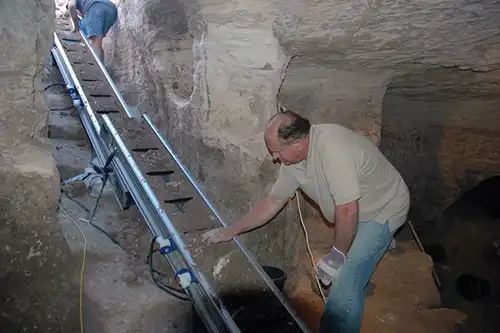
What archaeologists originally believed to be a small insignificant village in the foothills of the Judea Lowlands, has blossomed into the largest settlement or collection of settlements ever discovered in Israel. It began in 1961 when the operators of two military road graters attempted to pass each other. Moving too far to the right, one tractor broke through the ceiling of a limestone cave. As workers entered the cave, it was clear that the cave was a tomb with significant amounts of ancient graffiti engraved on the walls along with skeletons laying on benches. The discovery was monumental. The cave later became known as the “Jerusalem Cave” because it contained the oldest known writing of the word Jerusalem in Hebrew. The writings mentioned the name of God, contained a prophecy that God would yet redeem Judah, and a plea for forgiveness for the people of Israel. The inscriptions were dated from 600 to 700 B.C. Engravings of people, ships and structures were also found. There was little doubt that the inscriptions were written by a holy man.
In 1970 an Israeli graduate student, Joseph Ginat, was seeking a Ph.D. in cultural anthropology. Joseph had been serving as the Deputy Advisor on Arab Affairs to the Prime Minister of Israel, Golda Meir. He was considered an authority on ancient scripture and Middle East history. Joseph held degrees from The Hebrew University of Jerusalem, Department of Archaeology and History of Middle Eastern countries. Now he sought a Ph.D. in America. He requested a two-year leave of absence from his government duties to obtain a doctoral degree in Middle East Cultural Anthropology.
Supplied with references from top government officials including Golda Meir, Moshe Dayan, and others, Joseph was accepted into the Doctorial Program at New York University. About this same time, Hebrew University received an unexpected invitation from the University of Utah for a visiting professorship. The University of Utah was seeking a professor to come to Salt Lake City to teach in the department of anthropology and archaeology for a few semesters. Since Joseph was already going to America for his Ph.D. and to teach at NYU, he was approached about changing his plan and accepting the position in Salt Lake City. His response was thanks but no thanks. New York University had greater prestige and he had a cousin living in New York which would add interest to his being there. Besides, “Where is Utah?” He had never heard of the place.
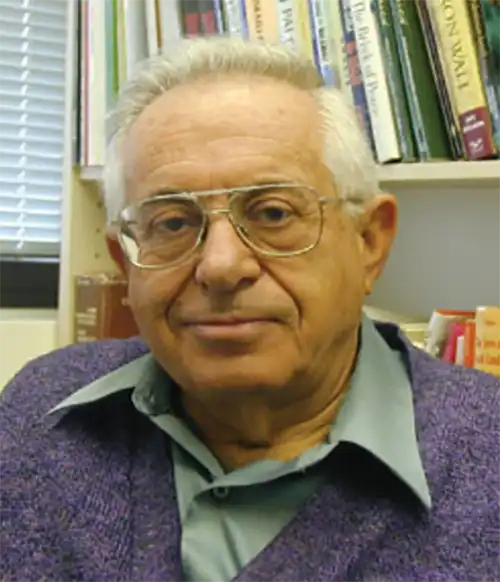
That evening he was awaken in the middle of the night when he heard a voice. Whether it was an actual voice, or the words in a dream, he does not know, but the words were clear: “GO TO UTAH!” He was frightened, overwhelmed, and emotionally moved upon hearing the voice. Joseph was a spiritual man. He knew that he had heard a voice and he interpreted the event as a spiritual prompting that he should not ignore. His only question was why him? The following morning, Joseph met again with officials at Hebrew University to inform them that, regardless of where Utah was, he had changed his mind and would accept the assignment.
Before departing to Salt Lake City for a prearranged meeting with University of Utah officials, Joseph contacted the Israel Consul General in Los Angeles, Moshe Yegar, for information about Utah, the local community, and the University of Utah. Moshe Yegar had attended several events in Salt Lake City and had even taken his family on vacations to Utah. He told Joseph that it was a wonderful place with a community well-versed in the knowledge of Judaism. In Utah, he remarked, Joseph the Jew would be a celebrity. Moshe Yegar suggested that Joseph connect with Irene Staples when he arrived in Utah and that she would take good care of him. Irene was the first official hostess for the Church of Jesus Christ of Latter-Day Saints. Her main assignment was to serve as a guide to the many guests and VIPs that came to Salt Lake City. Irene often entertained visitors in her home and had hosted Consul General Yegar on several occasions. The warm welcome received by Joseph from the university and the community convinced Joseph that Salt Lake City was the place for he and his family. The mountains were beautiful, even the snow was a welcome change. Upon finalizing his Ph.D. and teaching curriculum, Joseph returned to Israel to move his wife, Dahlia, and their 2 small children from Tel Aviv to Salt Lake City.
Joseph was invited to participate in panel discussions on radio and television. He had fought in the Six-Day War in the Middle East and his perspective on matters in the Middle East was relevant. While listening to a radio program where Joseph was a guest, Irene Staples called the station and asked that they have Joseph call her when the program finished. Remembering that Moshe Yegar had suggested that Joseph connect with Irene, Joseph felt a bit remiss that he had not reached out to her. Returning the call, Irene welcomed Joseph and his wife to a gathering at her home to meet with other scholars for an evening of food and comradery. The invitation was graciously accepted. The list of attendees included the Ginat’s, Sherman and Harriet Young, Cleon and Jewel Skousen, Truman and Ann Madsen, and others. It was here where Joseph and his wife were given their first copy of the Book of Mormon, in fact, each attendee brought a copy of the book as a gift. Joseph thought it a bit odd that all brought the same gift but graciously accepted each book. Joseph knew very little about the “Mormons” and he was anxious to lean more. By now he was keenly aware of the large LDS community in Utah. Before leaving that evening, Irene solicited a commitment from Joseph that he would read the book and that they would meet again to discuss any questions.
For several weeks Irene would call Joseph asking if he had begun reading the book. Admitting that he had not, Irene said on the last occasion: “Yesterday was your Shabbat and today is our Sabbath, so please take the time today to start reading.” Feeling guilty and hoping to eliminate further calls, Joseph accepted the prodding and agreed to begin reading the book.
As Joseph began reading the Book of Mormon, he was impressed. On numerous occasions he expressed his opinion that it would be impossible for anyone to write the first seven chapters of the Book of Mormon had they not actually lived in the land of Palestine. These chapters described the travels of Lehi and his family as they fled the land of Jerusalem. In the process, they traveled back and forth to the Jerusalem area several times. Joseph was convinced that the descriptions of their travels were specific enough and fit the terrain and profile of Israel so well, that it would be impossible for anyone to write these chapters without having a firm knowledge of the land of Israel. Also, the names of his children were names familiar to the area. He was soon to read another article that would further change his life.
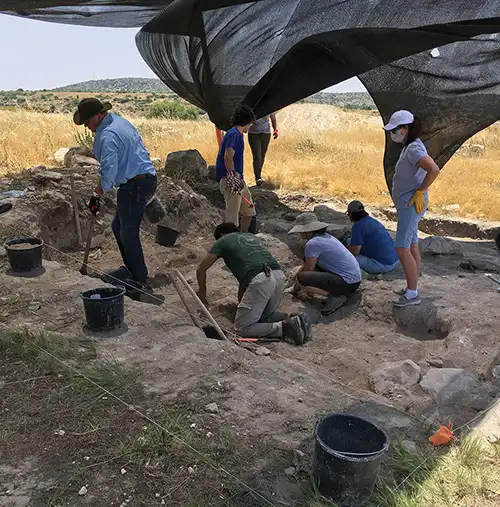
Joseph had recently purchased a book regarding recent archaeological finds in Israel. One evening while preparing for his lecture the next day, the wind coming in the window fluttered the papers and stopped at an article written by Frank Moore Cross, Jr. (an expert from Harvard on semitic languages) concerning a recent discovery located about 20 miles south of Jerusalem. The discovery was the Jerusalem Cave. Dr. Cross interpreted the written inscriptions as being written by a holy man fleeing from Jerusalem during the Babylonian invasion—the same period that the Book of Mormon claims Lehi and his family left Jerusalem. Dr. Cross was the first to interpret the inscriptions fully and correctly. According to Joseph, there were six things about the Jerusalem Cave that were well-established:
- The drawings and inscriptions dated back to the time of Jeremiah, around 600 B.C.
- Originally, the cave was not used as a tomb but was probably a temporary shelter, or place of refuge. Later it would be used as a tomb.
- The drawings included people, structures, and ships.
- There were three particularly interesting human figures.
- Most importantly, the writings consisted of a prophecy and plea, written in the name of God (Yahweh/Jehovah).
- The writings contained the oldest known writing of the word “Jerusalem” in Hebrew.
Who would dare write such a thing as if he were “Yahweh” or “Jehovah” remarked Joseph. Such would be blasphemous and would subject the writer to great penalty by both God and man, unless written by a prophet. The more Joseph read, the more excited he became. Most of the night he read and compared the Bible, the archaeological books, and the Book of Mormon. Based on some measure of inspiration, Joseph concluded that the cave was the hiding place of Lehi’s sons as described in I Nephi 3:27. . . “[A]nd the servants of Laban did not overtake us, as we hid ourselves in the cavity of a rock.” Joseph would call Cleon Skousen, who he had met at Irene Staples’ home, in the middle of the night to tell him of his discovery. Cleon suggested he go to bed, and they talk in the morning. Unsatisfied, Joseph called Irene around 5 o’clock in the morning and said, “Irene, I must talk to you. I have discovered something. I must talk to you immediately! She agreed to listen, and he began explaining his research and feelings about the cave and the Book of Mormon.
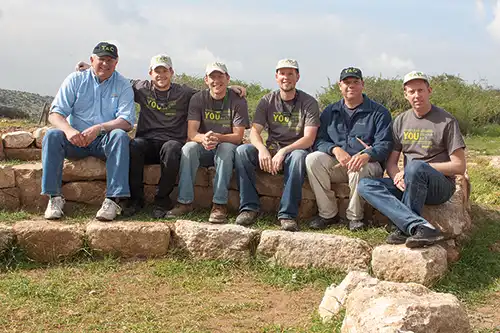
Joseph believed that no person in this area of Israel would be engraving ships as the cave was too far inland. Instead, they would draw more familiar objects such as houses, animals, trees, etc. Further, it was not uncommon for people of the Old Testament to name children based on places where they lived. Thus, Lehi may be from the land of Lehi. A meeting was arranged for Joseph to meet with then president of the LDS Church, Harold B. Lee. Joseph met with President Lee and other Church leaders on numerous occasions. At a meeting on July 15, 1971 Joseph offered his belief that the cave near Jerusalem was the same cave where Nephi and his brothers hid when they fled from Laban’s servants. Joseph also took the occasion to suggest two things that needed to be done by the LDS Church: first, that a monument should be placed on the Mount of Olives in commemoration of Orson Hyde dedicating the land of Israel for the return of the Jews; and second, that a monument should be placed at the entrance of the cave, dedicating it to the Book of Mormon and the sons of Lehi. At the conclusion of the meeting President Lee asked if Joseph believed in the Book of Mormon. The response was a confident, yes. He then asked if he believed that Jesus was the Messiah. To that, Joseph responded that he had not yet come to that conclusion.
Irene was usually present at all such meetings but at one meeting she felt that President Lee and Joseph should meet in private. The two men talked for about an hour. At the conclusion of the meeting, President Lee asked Joseph if he would accept a blessing from President Lee, which he warmly accepted. Leaving President Lee’s office Joseph was met by Irene waiting just outside the office. Joseph told Irene about the blessing. Irene offered to transcribe as much of the blessing as Joseph could remember, and she did.
Joseph was convinced that the Jerusalem Cave had a connection with the Book of Mormon, and he sought permission from Israel authorities to excavate the site. It was during this time that Joseph went back to Israel to visit family. One of his agenda items was to visit the Jerusalem Cave. While at the site, he met a Bedouin sheik who asked Joseph what he was doing there. Joseph replied that he believed the area was special. The sheik acknowledged that the site was sacred to Arabs and took Joseph a few hundred feet up the hill to a large oak tree surrounded by a stone wall. According to oral tradition, the sheik explained, it was here that a prophet would sit and teach and judge the people of Isaac and Ishmael. Do you know his name, Joseph asked. Yes, the Bedouin responded, his name was Lehi. That was all Joseph needed to confirm his feelings. The name of the area according to tradition was “Beit Lehi” meaning “the house of Lehi.” When this prophet Lehi lived was unknown, just that it was “long before prophet Mohammed.”

Joseph had become good friends with Cleon Skousen and his son-in-law, Glenn Kimber. Joseph asked the men to help arrange meetings with local business leaders to solicit their support to excavate the site. In the mid-1980’s Joseph, Cleon Skousen, and Glenn Kimber had raised enough funding and secured government approval to perform an initial excavation. A group of adults and students from the United States went to work at the site. Under the direction of Israeli archaeologist Yoram Tsafrir it soon became clear that the site had tremendous potential. Unfortunately, political unrest and other circumstances made full-time excavations not feasible. It wasn’t until 2005 that Joseph Ginat was granted excavation permits under the supervision of Israeli archaeologist Dr. Oren Gutfeld.
Cleon Skousen passed away in 2006 and the mantle of responsibility for working with Joseph Ginat fell to Glenn Kimber. For the next several years excavations occurred at Beit Lehi, generally by students from Kimber Academy and home-schooled students from the Intermountain area. In 2008, Alan Rudd and his wife, Debra, went on a tour of the site hosted by Glenn Kimber, Billy Casper, Hartman Rector, Jr., and Joseph Ginat. Alan and Debra were profoundly influenced by what they saw and felt. Upon returning to Utah, Alan solicited family members and friends to go excavate at the site for 3 to 4 weeks the following spring. Upon their return, Alan and Gary Rudd established a non-profit organization, the Beit Lehi Foundation.
Joseph Giant would return to Israel to serve under three Prime Ministers. For 35 years Joseph had deep impressions that Beit Lehi needed to be excavated and that such efforts would unlock hidden and significant discoveries. Today the Israel Antiquity Authority’s has officially recognized and designated the project as the Beit Lehi Regional Project. Israel has openly declared that Beit Lehi is one of the most significant archaeology excavations south of Jerusalem, maybe even in all of Israel. Joseph Ginat passed away in 2009 from pancreatic cancer. Before his death, his final desire as expressed to Alan & Gary Rudd was that the work at Beit Lehi continue. The promptings Joseph felt were real and he wanted some assurance that his work would not be in vain.
In 2010 Alan Rudd contacted Dr. Alex Stecker at Utah Valley University (UVU) to determine if there might be an interest from the university to collaborate on the Beit Lehi project. Dr. Stecker was amazing credentialed with a Ph.D. in Rabbinical Studies & Archaeology from Hebrew University, a DDS in New Testament Studies from Oxford University, and a MA in Near Eastern and Judaic Studies from Brandeis University. He had taught at BYU but was now a Senior Lecturer at UVU on Middle East History and Archaeology. Dr. Stecker would later became a member of the Beit Lehi Foundation Board and was an excellent portal into UVU.
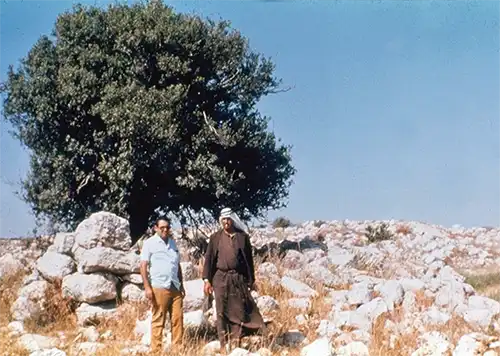
Several departments within UVU were approached but it was The College of Computer Science and Engineering that had the most interest. Dean Ernest Carey agreed to send a small group of faculty administrators to Israel to determine if the project would be suitable for inclusion in the university’s Engaged Learning curriculum. After 7 days in Israel, a recommendation was presented to the UVU administration that the project be approved. Since that time, UVU has sent a contingency of students and faculty to the site each year to perform valuable services under the direction of professors Darin Taylor and Michael Harper. UVU has adapted highly sophisticated technology for use in archaeology work, much to the surprise and satisfaction of Israel officials and academic scholars at Hebrew University.
Two excavations are conducted at Beit Lehi each year, and with each excavation the size and significance of the site increases. Today, the site remains less than 20% excavated. Excavating and protecting such a discovery is daunting and expensive. To those that have contributed to this effort, you have our deepest gratitude. Without private donations this project could not continue. Excavation is a small part of the discovery process, as each plot is measured and mapped and each artifact cleaned, studied, dated, and cataloged. Regular reports describing discoveries are provided to the Israel authorities. Fun For Less Tours in Draper, Utah, has been bringing groups to Beit Lehi since 2005, with approximately 1000 persons visiting each year. Their support has also been invaluable.
Welcome to Beit Lehi!
